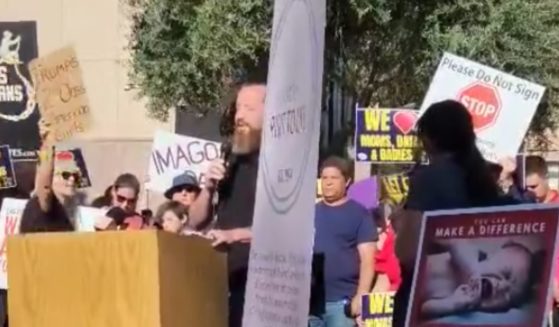'Extinct' Giant Tortoise Last Seen Alive in 1906 Rediscovered After 113 Years
In remote and difficult-to-reach places it can be nearly impossible to keep tabs on the progression of flora and fauna. The Galapagos islands hold a variety of unusual creatures, including finches, marine iguanas, flightless cormorants, seals and — of course — giant tortoises.
In fact, the very name for the islands is linked to the large, shelled critters. “The old Spanish word galapago meant saddle, a term early explorers used for the tortoises due to the shape of their shells,” reads a page on the Galapagos Conservancy website.
Tortoises thrived on the islands, able to eat vegetation and deal with the rocky terrain. They can survive for up to a year without having either food or water, and live to be over 100 years and close to 500 pounds, according to National Geographic.
However, after their discovery on the islands, when travelers realized how long the reptiles could last without food, the tortoises were exploited. They became a food source for people passing through, and it wasn’t until 1959 that efforts were made to protect the remaining creatures.
Four species have already been lost, with the last Chelonoidis abingdoni (aptly named “Lonesome George”) specimen passing away in 2012. The tortoise populations plummeted after being used for food and their eggs falling prey to various critters on the islands.
As of today, there are 15 known species, and experts believed that the islands of Fernandina, Floreana, Santa Fe and Pinta held no more tortoises — until just recently, when a specimen was discovered on Fernandina, while a crew was filming an episode for Animal Planet’s “Extinct or Alive” show.
“The turtle was found on Sunday February 17, 2019, in a patch of vegetation in the lower area of Fernandina Island,” reads a translation of a page on the Ministerio Del Ambiente website. “It is an adult female that possibly exceeds one hundred years.”
“Washington Tapia, Director of the GTRI and leader of the expedition indicated that genetic studies will be carried out to reconfirm that the individual found is of the Fernandina Island species.”
The female tortoise was found underweight and was taken on a boat to the island of Santa Cruz, where there is a Giant Turtle Breeding Center.
“On Fernandina Island – # Galapagos, the expedition led by @ parquegalapagos and @ SaveGalapagos, located a specimen (adult female) turtle species Chelonoidis Phantasticus, thought to be extinct more than 100 years ago,” Marcelo Mata, the Minister of Environment, tweeted on Feb. 19. The species was last seen alive in 1906.
NOTICIA MUNDIAL | En la isla Fernandina – #Galápagos, la expedición liderada por @parquegalapagos y @SaveGalapagos, localizaron un espécimen (hembra adulta) de la especie de tortuga Chelonoidis Phantasticus, que se creía extinta hace más de 100 años. pic.twitter.com/51HbqWcwMG
— Marcelo Mata (@Marcelo_MataG) February 19, 2019
Experts who moved the ancient turtle to the breeding center have hope that others of her kind may be hiding out on Fernandina like she was, as they’ve found evidence such as tracks and droppings. They hope to use this tortoise to bring back the species, but of course, it takes two to tango.
“They will need more than one, but females may store sperm for a long time,” a Duke University professor of conservation ecology, Stuart Pimm, told Time. “There may be hope.”
“This encourages us to strengthen our search plans to find other turtles, which will allow us to start a breeding program in captivity to recover this species,” Danny Rueda, the Galápagos National Park director, said, according to USA Today.
The host of the Animal Planet show, Forrest Galante, claims this find marks one of the most exciting moments of his life.
“As a biologist and someone who has dedicated my life to the pursuit of animals believed extinct, this is by far my greatest scientific accomplishment and proudest moment,” he said.
Truth and Accuracy
We are committed to truth and accuracy in all of our journalism. Read our editorial standards.












